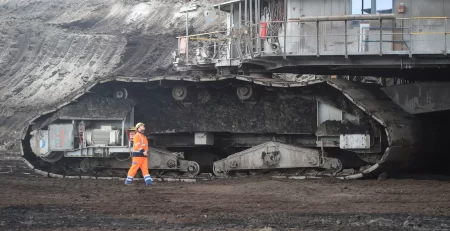Navigating the Future: Innovations and Challenges in the Oil and Gas Industry
The oil and gas industry, a cornerstone of the global economy, stands at a crossroads. Rapid technological advancements, evolving energy policies, and environmental concerns are reshaping the landscape of this vital sector. As the world transitions toward cleaner energy sources, the oil and gas industry is undergoing significant transformations. In this article, we explore the future of the oil and gas industry, focusing on innovations, challenges, and potential pathways forward.
1. Transition to Renewable Energy:
The global push for sustainability is driving a shift towards renewable energy sources. Solar, wind, and hydroelectric power are gaining prominence, leading to increased competition for traditional fossil fuels. Oil and gas companies are investing in renewable energy projects, exploring avenues such as solar farms and wind energy installations to diversify their portfolios and adapt to the changing energy landscape.
2. Technological Innovations:
Technological advancements, including automation, Artificial Intelligence (AI), and IoT devices, are revolutionizing the oil and gas industry. Automation streamlines operations, enhancing efficiency and reducing costs. AI algorithms optimize drilling processes, reservoir management, and predictive maintenance, improving overall productivity. IoT sensors provide real-time data, enabling proactive decision-making and ensuring the safety of workers and equipment.
3. Environmental Concerns and Emission Reduction:
Environmental consciousness is reshaping industry practices. Oil and gas companies are investing in Carbon Capture and Storage (CCS) technologies to reduce greenhouse gas emissions. Additionally, there is a growing emphasis on methane emission monitoring and control. The industry is striving to minimize its environmental footprint, adopting eco-friendly practices and adhering to stringent regulations to mitigate environmental impact.
4. Diversification and Downstream Ventures:
To adapt to changing market demands, many oil and gas companies are diversifying their portfolios. Investments in petrochemicals, plastics, and renewable chemicals are becoming prevalent. Downstream ventures, including refining and distribution, provide stable revenue streams. By embracing downstream opportunities, companies can navigate market fluctuations and maintain profitability.
5. Energy Efficiency and Cost Optimization:
Improving energy efficiency is a key focus for the industry. Oil and gas companies are investing in research and development to enhance extraction techniques and minimize energy consumption. Cost optimization efforts include leaner operations, innovative drilling technologies, and predictive analytics to optimize maintenance schedules. By reducing costs and enhancing efficiency, companies can remain competitive in a changing market.
6. Geopolitical Challenges and Market Volatility:
Geopolitical tensions and market volatility pose significant challenges to the industry. Political conflicts, trade disputes, and regulatory uncertainties impact oil prices and investment decisions. Companies must navigate these complexities, diversify their market presence, and anticipate geopolitical developments to mitigate risks effectively.
In conclusion, the future of the oil and gas industry hinges on adaptation, innovation, and sustainability. Companies that embrace renewable energy, invest in cutting-edge technologies, prioritize environmental responsibility, and diversify their ventures are better positioned to thrive in the evolving energy landscape. As the industry undergoes transformations, collaboration between governments, companies, and research institutions is essential to drive meaningful change and ensure a sustainable energy future for all.











Leave a Reply